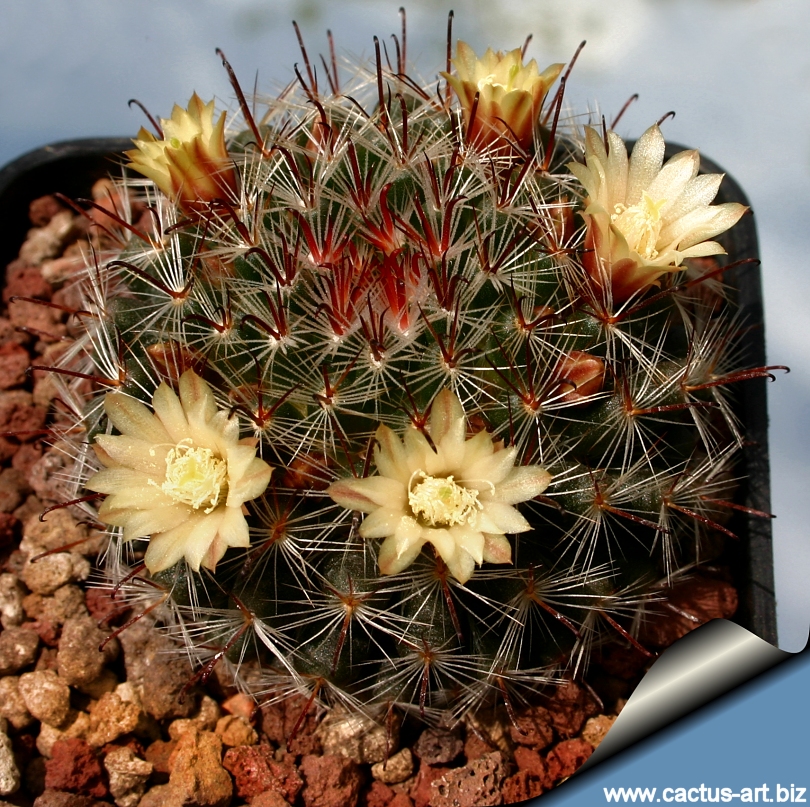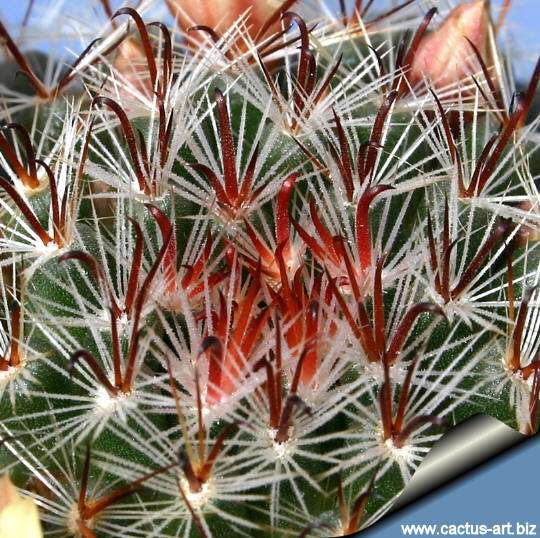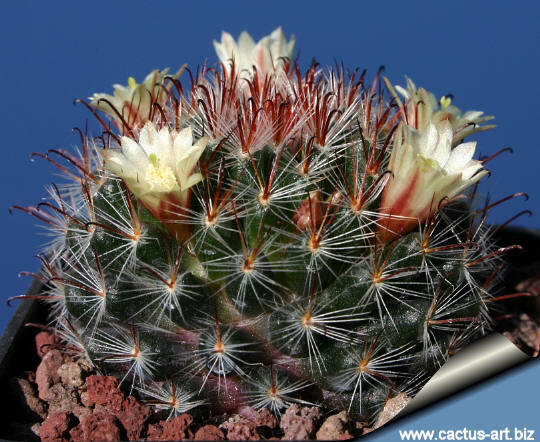|
|
|

Mammillaria brevicrinita REP1127 Labor Vieja, San Luis
Potosí, Mexico 1200m
|
|
Description: Plants solitary or clustering.
Stems: Globose, dark green, 1 - 8 cm high and in diameter.
Without latex.
Tubercles: Tubercles not compact, conical to cylindrical.
Axil with some
with bristles, sparsely woolly.
Radial spine: 10 - 29, flattened against the stem surface,
white, finely
pubescent, 6 - 9 mm long.
Central spine: 0 - 7, awl-shaped, yellowish to red to dark brown,
8-16 mm long, one or two hooked.
Flower: Funnel-form, less deeply
set, yellowish white, 10 - 20 mm long and
in diameter.
Fruit: Globose to ovate, green to bright red.
Seed: Brownish black,
coarsely pitted.
Photo of conspecific taxa, varieties, forms and
cultivars of plants belonging to the Mammillaria crinita
complex
(This taxon has lots of synonyms
(like most mammillaria) with several
controversial varieties and subspecies):
Propagation: Direct sow after last frost, division.
Offsets are easily detached and rooted.
|
|
Advertising
|
|
|
|
Family:
Cactaceae (Cactus
Family)
|
Scientific Name:
Mammillaria brevicrinita
Reppenhagen 1987
Origin:
San Luis Potosi, Mexico. Altitude about 1200-1400
m
|
Synonym:
- Mammillaria crinita A. P. de
Candolle
Mem. Mus. Nat. Hist. Paris, 17: 112 (1828)
|
|
|

 Cultivation: An easy species in
cultivation, with offsets formed at irregular intervals.
Water regularly in summer, but do not over-water (rot
prone). Use
a pot with good drainage and a very porous potting media,
keep dry in winter.
Feed with a high potassium
fertilizer in summer.
It is quite frost resistant if kept dry, hardy as low as -5° C (some
reports give it hardy to -12°C). Outside full sun or
afternoon shade, inside it needs bright light, and some direct sun.

 |
|